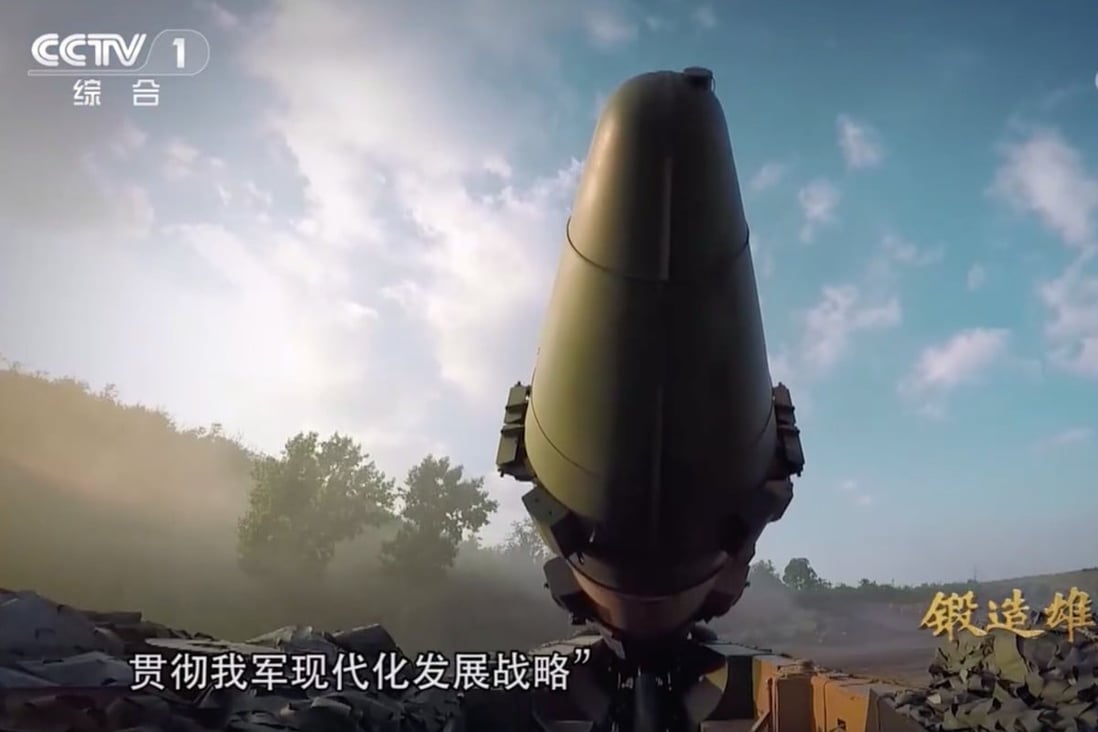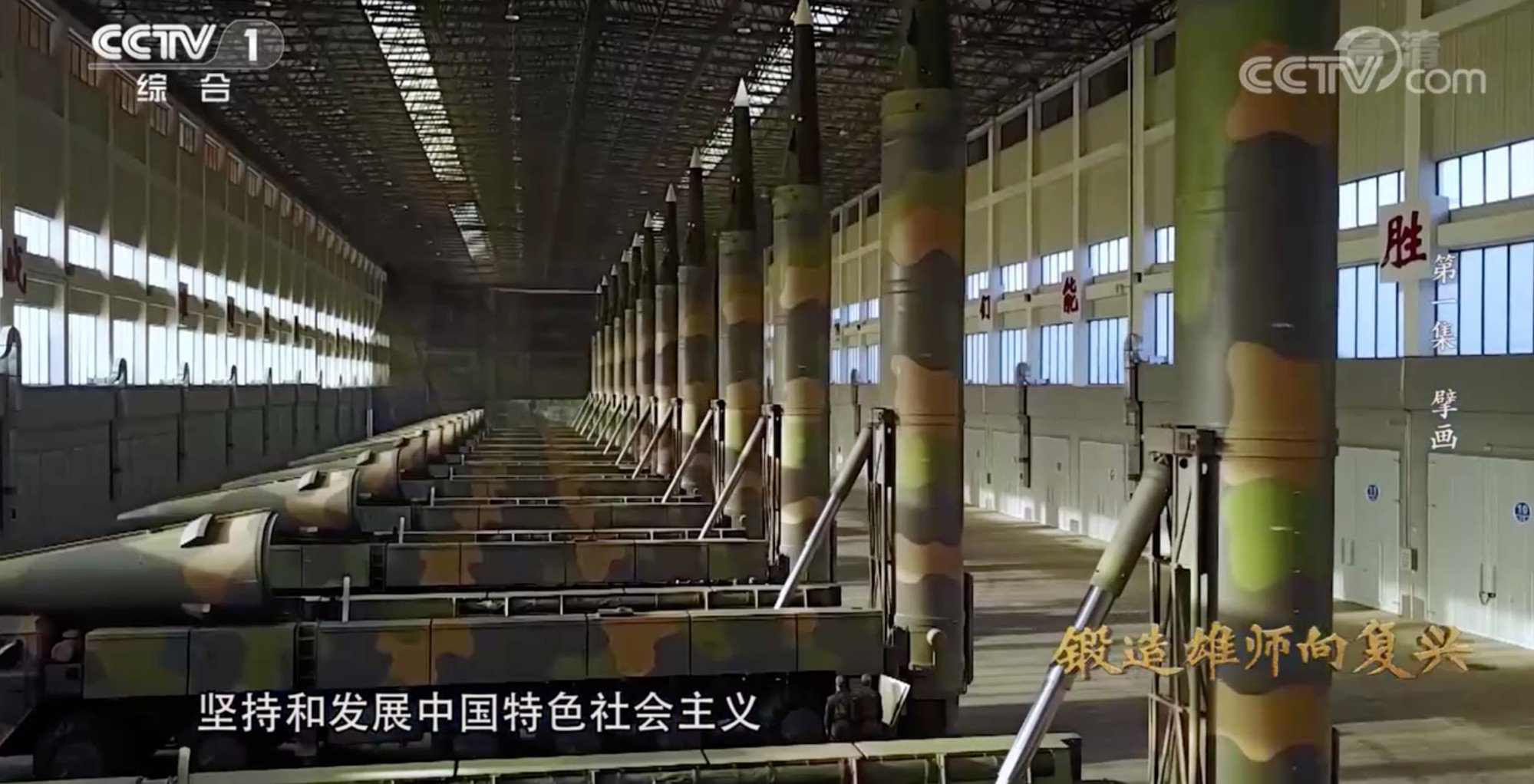Amid Russia’s nuclear threat to NATO over its involvement in Ukraine, China’s media recently released a video to commemorate National Day that featured the nation’s most potent strategic nuclear weapons.
The latest footage was produced for an eight-part documentary series for state-owned China Central Television. It featured anti-aircraft carrier DF-21D and DF-26B ballistic missiles and new-generation DF-41 intercontinental ballistic missiles (ICBM).
These missiles, which have long been considered a severe threat to American aircraft carriers, can block the US Navy from safely conducting operations close to the Chinese coast.
China has two ballistic missiles dubbed “carrier killers,” the (Dong-Feng) DF-21D and DF-26, that could strike moving aircraft carriers. The DF-26, according to defense observers, is capable of carrying out precise nuclear or conventional attacks against land and sea targets.

Meanwhile, experts, who believe the video is aimed at strategic deterrence, stated that the DF-41 ICBM could carry several nuclear warheads and have a range of nearly 12,000 kilometers (7,450 miles), allowing it to strike any location on the US mainland.
The CCTV series was broadcast last week to commemorate the 73rd anniversary of the founding of the People’s Republic. It featured at least a dozen DF-26B missiles with launchers or the equivalent of an entire missile brigade.
Song Zhongping, a former People’s Liberation Army instructor, was quoted by SCMP as saying, “Showcasing Dongfeng series strategic weapons is a subtle warning to the United States, which is instigating other countries to put on pressure on Beijing over the Taiwan issue, as the fierce Ukraine war also poses a dilemma for China.”
He pointed out that the PLA Rocket Force’s strategic weapons were intended to be displayed in National Day military parades, but because China only holds such significant events once every ten years or every five years, the PLA can also use video footage to demonstrate its might to its American counterpart.
“The dual-capable missiles – able to carry both conventional and nuclear warheads – would pose a great threat to the US aircraft carrier strike groups,” Zhongping warned.
According to Zhongping, the conventional warheads on the dual-capable DF-21D and DF-26 missiles are strong enough to prevent US warships from approaching Chinese waters because of their precision strike capacity.
DF-21D and DF-26B Missiles
It is believed that the DF-21D and DF-26 have warheads with sufficient mobility to attack big, relatively slow-moving ships like aircraft carriers.
In August 2020, the PLA Rocket Force fired two “aircraft carrier killer” missiles into the South China Sea just one day after accusing the US of deploying a U-2 spy plane into a “no-fly zone” during a PLAN live-fire naval rehearsal off China’s northern coast.
The DF-21D is designed to maneuver dynamically during its reentry phase, giving it the capacity to attack moving warships. It is believed to carry a conventional payload and has an estimated range of around 1,800 kilometers.
“TV footage aired earlier by PLA channel 81 TV showed nearly two dozen DF-26B missiles and launchers, or at least two such missile brigades, as being combat ready,” the report noted. According to posts on Chinese social media platforms, one of the DF-26B brigades is reportedly stationed in the northeastern city of Dalian under the Northern Theater Command.

The report further highlighted that China has also established new missile brigades stationed in its eastern and southern theater commands, which are responsible for the security of the South China Sea and Taiwan Strait, respectively.
The CCTV series’ opening episode, Forging Heroes to Revival, which consists of eight parts, also featured demonstrations of the DF-15 and DF-16 short-range ballistic missiles.
These were part of the massive live-fire military drill that the PLA staged around Taiwan on August 4. This was in response to a significant rise in tensions brought on by US House Speaker Nancy Pelosi’s trip to Taipei.
China views self-governing Taiwan as a province that would one day fall under its sovereignty. The “reunification” of China with Taiwan “must be fulfilled,” according to President Xi Jinping, who hasn’t ruled out the possibility of using force to accomplish the goal.
On the other hand, Taiwan considers itself separate from the Chinese mainland since it has a different constitution and democratically elected officials. The US president has previously stated that the country will support Taiwan against any PLA attack.
- Contact the author at ashishmichel@gmail.com
- Follow EurAsian Times on Google News




